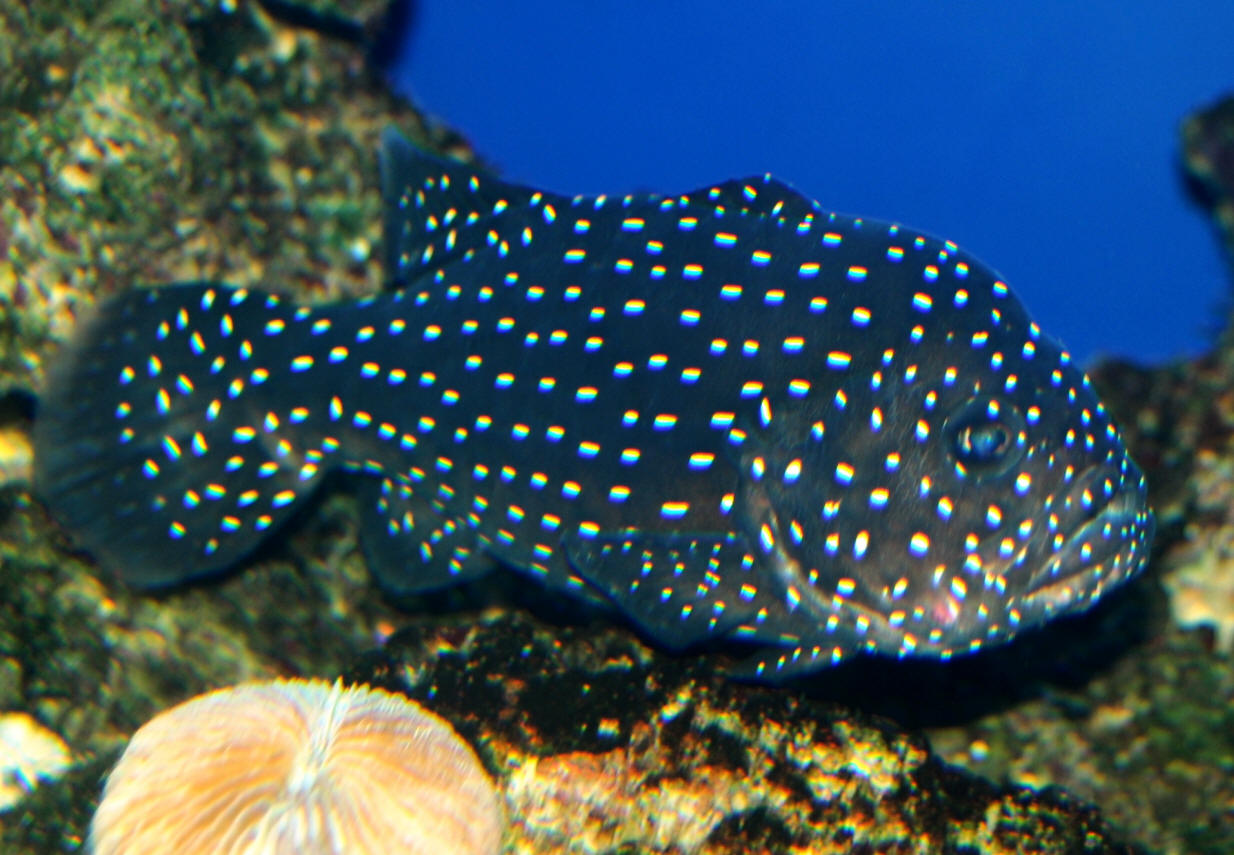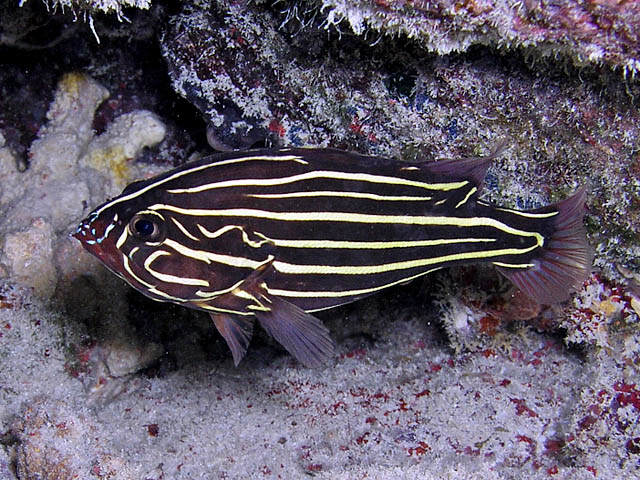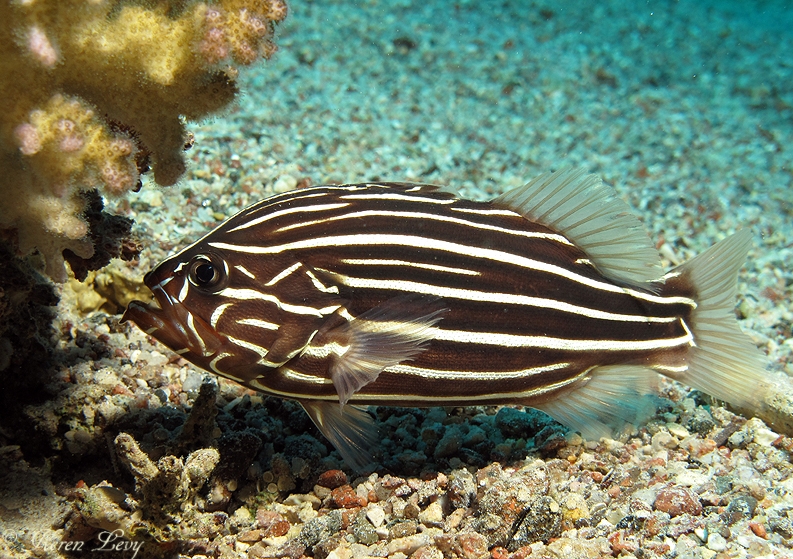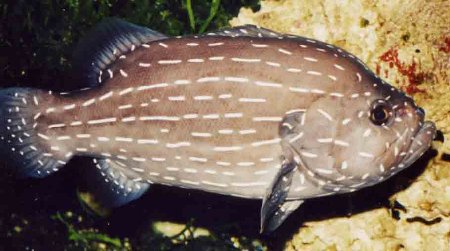
Grammistes sexlineatus
FAMILY
Serranidae
TAXONOMY
Grammistes sexlineatus (Thunberg, 1792), type locality not specified.
OTHER COMMON NAMES
English: Black and white–striped soapfish, gold-striped soapfish,
six-stripe soapfish; French: Poisson savon bagnard.
PHYSICAL CHARACTERISTICS
Body typically grouper or perch-like but somewhat stout. The
head is relatively large. There are 7 spines and 13–14 soft rays
in the dorsal fin and 2 spines and 9 soft rays in the anal fin.
The caudal fin is truncate. The base color is dark brown to
black with a series of yellow stripes running from the snout
back to the caudal peduncle. With age, some stripes may break
up into dashes. Juveniles have small spots. Fins are pinkish in
color. Grows to about 12 in (30 cm) in total length.
DISTRIBUTION
Indo-West Pacific, from the Red Sea east to the Marquesas
and Mangareva Islands, north to southern Japan and south to
northern New Zealand.
HABITAT
This species occurs on coral and rocky reefs, usually in or near
caves and under ledges to a depth of 425 ft (130 m).
FEEDING ECOLOGY AND DIET
Generally an ambush predator, and quite voracious as it
feeds upon smaller fishes and crustaceans. May be preyed
upon by larger predatory fishes but usually rejected immediately
because of the secretion of grammistin, a toxin secreted
from glands in the skin that is used as an antipredator mechanism.
BEHAVIOR
Usually solitary, preferring to hide during daylight while foraging
at night.
REPRODUCTIVE BIOLOGY
Little is known. Likely a protogynous hermaphrodite with a
haremic mating system, pair spawning, and pelagic eggs and
larvae.
CONSERVATION STATUS
Not listed by the IUCN.
SIGNIFICANCE TO HUMANS
An interesting aquarium species, although because of its voracious
appetite it must be kept with much larger fishes. Also
taken as a minor commercial and subsistence species in some
localities. May be ciguatoxic in some areas.
Other popular Animals
Photo Gallery of - Sixline soapfish





 Animalia Life
Animalia Life